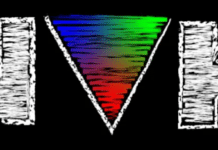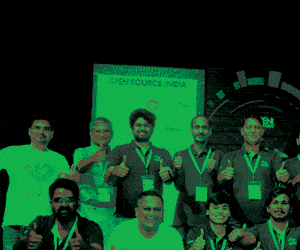Imagine a realm where your data is not just stored, but meticulously managed, safeguarded, and easily recoverable. Welcome to the world of open source data management and security solutions. Here, collaborative development meets cutting-edge technology, creating a symbiotic relationship that ensures data transparency, reliability, and accessibility.
Understanding why data management matters is crucial in today’s digital age. Without it, data remains chaotic and unusable. Open source solutions bring community-driven innovation to the table, offering robust strategies for managing data in the cloud era and addressing the unique challenges posed by new-age technologies like AI and IoT.
- Understanding the fundamentals: Why data management matters — In today’s digital age, data is omnipresent. It fuels businesses, informs strategies, and drives innovation. Without a solid data management strategy, your data is like a library with no catalogue—a chaotic mess where finding the right information is a Herculean task. Effective data management transforms this chaos into order, ensuring data is organised, accessible, and usable.
- The role of open source: Leveraging community-driven innovation — Open source is a philosophy that prioritises community involvement and shared growth. By leveraging open source tools, organisations tap into a pool of collective intelligence, ensuring their data management strategies are not only robust but also constantly evolving with the latest innovations.
- Crafting a data management strategy for the cloud era —As businesses migrate to the cloud, traditional data management strategies need a revamp. Cloud environments offer scalability and flexibility, but they also bring challenges such as data integration, security, and compliance. Open source solutions like Kubernetes and Apache Hadoop provide the infrastructure to manage vast amounts of data across cloud platforms, ensuring seamless integration and robust security.
- Addressing the unique challenges of new-age technologies —New-age technologies like artificial intelligence, machine learning, and the Internet of Things (IoT) generate massive amounts of data. Managing this data requires strategies that can handle volume, velocity, and variety. Open source tools like TensorFlow and Apache Kafka are at the forefront, offering scalable solutions that cater to the dynamic needs of these technologies, ensuring efficient data processing and management.
Fortifying data storage and security at the edge: IoT perspectives
In the world of IoT, data is generated at the network’s edges, necessitating new storage and security strategies.
- Exploring the edge: Today, data is generated not just in centralised servers, but at the very edges of your network—think smart homes, connected cars, and industrial sensors. This is the realm of IoT. Here, data storage and security take on new dimensions, requiring strategies that can handle decentralised data points and real-time processing. Open source solutions like EdgeX Foundry and Apache NiFi offer frameworks to manage data at the edge, ensuring security and efficiency.
- Open source solutions for securing data generated by IoT devices: Security in IoT is paramount. With devices scattered across vast networks, each generating sensitive data, securing this information is critical. Open source security solutions like OpenSSL and Let’s Encrypt provide the encryption and authentication mechanisms necessary to protect data as it flows from device to cloud, ensuring integrity and confidentiality.
- Implementing data de-duplication with Linux-based storage systems: Data deduplication is the process of eliminating redundant copies of data, optimising storage and improving efficiency. Linux-based systems, with their powerful file systems like ZFS and Btrfs, offer built-in deduplication capabilities. By leveraging these open source tools, organisations can significantly reduce storage costs and enhance data management efficiency.
- Building robust backup and recovery systems for edge computing environments: Edge computing environments, by nature, are prone to disruptions. Ensuring data continuity requires robust backup and recovery systems. Open source solutions like Bacula and Amanda provide comprehensive backup strategies that cater to the unique needs of edge environments, ensuring data is backed up in real-time and easily recoverable in case of failures.
Empowering enterprises with open source backup solutions
Open source backup solutions offer enterprise-grade features, making them ready for corporate use. Comparing tools helps organisations select the best fit for their needs.
- Comparing popular open source backup and storage solutions: The open source ecosystem offers a plethora of backup and storage solutions. Tools like Duplicity, BackupPC, and Restic each bring unique features to the table. Duplicity provides encrypted, bandwidth-efficient backup, BackupPC excels in managing backups for multiple systems, and Restic offers fast, secure, and easy-to-use backup capabilities. Comparing these tools helps organisations choose the right solution based on their specific needs.
- Understanding the OSS way of managing data security: Unlike proprietary solutions, OSS allows organisations to inspect and modify the source code, ensuring there are no hidden vulnerabilities. This transparency fosters trust and enables rapid response to security threats, making OSS an ideal choice for managing data security.
- Evaluating the readiness of open source backup solutions for enterprises: Are open source backup solutions ready for the enterprise? The answer is a resounding yes. Solutions like Bacula, with its enterprise-grade features, and UrBackup, known for its user-friendly interface and robust performance, are testament to the maturity of open source backup tools. These solutions offer the reliability, scalability, and support needed for enterprise environments.
- Choosing the right open source backup solution for your organisation: Selecting the right backup solution involves assessing organisational needs—such as data volume, regulatory requirements, and budget constraints. Open source tools like Amanda, with its ability to handle large-scale backups, and Time Vault, designed for incremental backups, offer diverse options. Evaluating these tools against your criteria ensures you choose a solution that aligns with your strategic goals.
Building your own backup system: DIY with open source tools
Tools like UrBackup, Clonezilla, and Bareos simplify setup and management, providing robust solutions tailored to various backup needs.
- Exploring open source backup solutions for Ubuntu, OpenMediaVault, and more: For tech enthusiasts and small businesses, building a DIY backup system can be both cost-effective and empowering. Ubuntu, with its robust support for open source software, pairs well with tools like Duplicity and BackupPC. OpenMediaVault, a NAS solution based on Debian, provides a simple yet powerful platform for setting up comprehensive backup systems using open source tools.
- Setting up backup systems with UrBackup, Clonezilla, Bareos, and others: Setting up a backup system can seem daunting, but open source tools simplify the process. UrBackup offers a straightforward setup with web-based management, Clonezilla excels in disk imaging and cloning, and Bareos extends Bacula’s capabilities with modern features. These tools cater to various backup needs, from personal use to complex enterprise environments.
- Harnessing the power of Duplicity, BackupNinja, BackupPC, and similar tools: Duplicity, with its encrypted backups, BackupNinja, designed for flexible backup scheduling, and BackupPC, known for efficient backup management, each offer distinct advantages. By harnessing these tools, users can create tailored backup solutions that meet specific needs, ensuring data integrity and availability.
- Designing a backup solution tailored to your needs with Amanda, Bacula, or UrBackup: Amanda, Bacula, and UrBackup provide comprehensive backup solutions suitable for diverse environments. Amanda’s simplicity, Bacula’s enterprise features, and UrBackup’s ease of use make them ideal choices for designing custom backup solutions. By assessing your requirements and leveraging these tools, you can build a backup system that ensures data safety and accessibility.
Designing storage infrastructure with open source: SAN, NAS, and beyond
Open source solutions are pivotal in building scalable and secure SAN and NAS systems. Using popular Linux distributions, these platforms offer robust features and community support, enabling the creation of versatile and resilient storage infrastructures.
- Unravelling the role of open source in SAN and NAS design: Storage area networks (SAN) and network-attached storage (NAS) are critical components of modern data infrastructure. Open source solutions like FreeNAS and Openfiler provide the foundation for building scalable, secure, and cost-effective SAN and NAS systems. These platforms offer robust features and community support, ensuring reliable storage solutions.
- Creating storage systems using popular Linux distributions: Linux distributions such as Ubuntu, CentOS, and Debian serve as excellent bases for creating storage systems. With powerful file systems like ZFS and Btrfs, and tools like LVM and mdadm, these distributions enable the creation of versatile and resilient storage infrastructures. Leveraging these tools allows for tailored storage solutions that meet specific organisational needs.
- Building robust storage solutions with FreeNAS and other open-source platforms: FreeNAS, now known as TrueNAS CORE, is a leading open source NAS solution. Its robust features, including ZFS support, data protection, and easy-to-use interface, make it ideal for building reliable storage systems. Other platforms like OpenMediaVault and Rockstor offer additional options, each bringing unique strengths to the table.
- Essential considerations when building your data storage infrastructure: Building a data storage infrastructure involves several considerations: capacity planning, scalability, data protection, and cost. Open source solutions provide the flexibility to address these factors effectively. By choosing the right tools and designing with future growth in mind, organisations can build storage systems that are both robust and adaptable.
Disaster recovery management: Mitigating risks with FOSS
Disaster recovery is essential for maintaining business continuity. By designing resilient strategies with open source tools, enterprises can minimise downtime and data loss.
- Managing disaster recovery with open source solutions: Disasters, whether natural or man-made, pose significant risks to data integrity. Open source solutions like Bacula and Amanda provide comprehensive disaster recovery options, ensuring data can be restored quickly and efficiently. These tools offer features like incremental backups, offsite storage, and automated recovery processes, minimising downtime and data loss.
- Leveraging open source tools for seamless recovery in case of data loss: When data loss occurs, rapid recovery is crucial. Open source tools like Restic and Duplicity enable seamless data recovery through features such as encryption, compression, and deduplication. These tools ensure that data can be restored to its original state, maintaining continuity and minimising impact on operations.
- Designing resilient disaster recovery strategies for enterprises: Open source solutions like Bareos and Bacula offer enterprise-grade features, including support for diverse environments, comprehensive reporting, and integration with other IT systems. By designing resilient disaster recovery strategies with these tools, enterprises can ensure data is protected and operations can resume swiftly after an incident.
From crafting robust data management strategies to fortifying edge computing environments and empowering enterprises with reliable backup solutions, open source tools offer unparalleled flexibility, transparency, and innovation. By embracing these community-driven solutions, organisations and individuals alike can navigate the complexities of data management with confidence, ensuring their most valuable asset—data—remains secure, accessible, and resilient.



































































